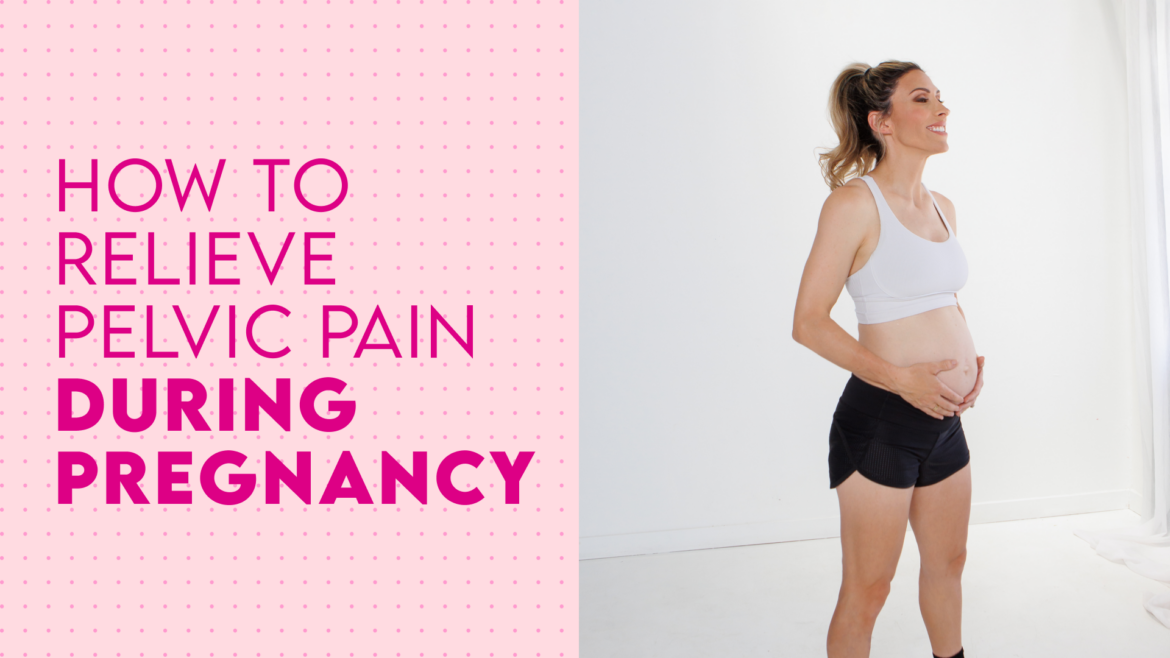Are you pregnant and feeling pelvic pain? Maybe it’s a sudden, shooting pain, or perhaps it’s more constant.
Try not to be alarmed. Even though it’s a literal pain in the butt – pelvic girdle pain (PGP) is likely not a serious issue.
Let’s talk about it, and ways to relieve discomfort.
What is Pelvic Girdle Pain (PGP)?
Sometimes PGP is called symphysis pubis dysfunction (SPD). It refers to pain or discomfort in the pelvis, pelvic bones, lower back, and hips during pregnancy.
It may even extend to your upper thighs and perineum. PGP is common – estimates say 20-25 percent of people experience moderate or greater pelvic pain during pregnancy.
What Causes Pelvic Girdle Pain?
Typically, pelvic girdle pain in pregnancy is caused by changes going on in your body. Hormonal shifts, joint stiffness, and the growth and weight of the baby and uterus can all contribute to PGP.
You may feel pelvic pain at the beginning of pregnancy or at any point throughout the second and third trimesters. Fortunately, it is not harmful for the baby, and over the long term, PGP typically heals on its own.
Tips to Help you Cope with Pelvic Pain During Pregnancy:
How Do I Ease Pelvic Girdle Pain?
There are some things you can do to help ease pelvic and lower back pain in daily life:
1. “Move like a Mermaid”
Keep your knees and thighs together as you get in and out of bed, the car, etc.
2. Sit When Getting Dressed
To avoid standing on one leg, try to sit as much as possible when getting dressed. Engage your deep core muscles as you transition from one position to another.
3. Use a Pregnancy Belt
A pregnancy support belt can also help stabilize the pelvis. The Serola Scroiliac Belt was designed to fit snugly around the hips to provide external ligament support, mimicking your body’s biomechanics.
4. Wear Supportive Shoes
We put together a list of supportive shoes to wear when healing your pelvic floor.
5. Sleep on your Side, with a Pillow Between your Knees
A pregnancy pillow can help support good sleeping posture.
6. Incorporate Low-Impact Exercises
Focus on low-impact exercises – yoga, recumbent biking, and swimming can take some of the pressure off your pelvic region. Additionally, the SLAM Pregnancy program was designed specifically to support growing and changing bodies. Check out this post for more stretches to help relieve back pain during pregnancy.
7. Incorporate Pelvic Floor Release Exercises Into Your Routine
PGP and a tight, or hypertonic pelvic floor, often go hand-in-hand. Movements such as holding a deep squat, cat-cow, and reclined figure four stretches can provide needed relief. Check out this post and this video to learn how to do these stretches for pelvic girdle pain.
8. Proper Core Breathing
Focus on proper core breathing and building a supportive abdominal system with core exercises.
Can I Exercise with Pelvic Pain During Pregnancy?
Yes! When it comes to exercise, the most important thing is to remain active, but also rest as needed.
What Should I Avoid?
In general, avoid anything that is high impact and/or increases the pain you’re experiencing.
-
High-Impact Exercises
Avoid high-impact exercises like running or tennis. If your pain worsens with activity, stop, and rest. -
Sitting or Standing for Too Long
Try not to sit or stand for long periods. Movement keeps the joints limber. -
Stairs
Minimize going up and down stairs. If you need to go up them, try walking up the stair sideways and take small steps. -
Heavy Objects
Try to avoid lifting heavy objects if you notice that it aggravates the pain.
When Should I be Concerned About Pelvic Pain During Pregnancy?
If the pain or discomfort is unbearable or impacting daily life, talk to your OB or midwife. Additional treatment or physical therapy may be needed.
When it’s time for delivery, most women experiencing pelvic girdle pain can deliver vaginally. Talk with your provider in advance so they can better help you during labor and delivery.
Check out Get Mom Strong’s SLAM Stretch and SLAM Pregnancy programs for great pelvic floor relaxation and release work.
